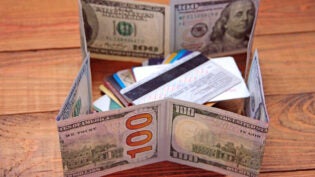5 Keys to Minimizing the Burn Rate for Your Startup
By: Marty Zwilling

Cash flow is a basic survival metric for every startup. Investors check your burn rate to assess your efficiency, and project your remaining runway before you run out of money and into a brick wall. Don’t wait until you are almost out of cash before managing every dollar spent, or looking for the next refueling from investors. Desperate entrepreneurs lose their leverage and die young.
It doesn’t take a financial genius to recognize that you need to keep your burn rate low. Yet it always amazes me that I can find two different startups, seemingly working on the same problem, with one having a burn rate several times higher than the other. Of course, their answer is that the second intends to get to market faster, but every engine has limits regardless the fuel applied.
If your runway is less than a year, it’s time to either begin looking for a new cash infusion or defining and implementing a Plan B to assure survival. Your goal is that magical breakeven point and hockey-stick profit-growth curve. Raising money from professional investors, even friends and family, takes time. Count on six months from beginning the funding process until a new check is cashed.
As a mentor to many entrepreneurs and startups, here are my best recommendations for keeping the burn rate low, planning ahead and maintaining credibility with investors:
Manage cash flow personally every day. A big influx of orders may feel like success, but can kill your business if you don’t have the cash to produce, deliver and wait for payment. The best entrepreneurs manage cash flow ruthlessly and never delegate decisions about spending money. Cash flow out equates to burn rate, and the runway depends on your reserves.
Buffer your projected resource requirements. You will make mistakes. Things will cost more than you expect. Always add 20 percent to your best estimate of funding requirements when approaching investors. They understand startup realities. Better to ask for more early. Going back to investors for more money ahead of the plan is high in terms of credibility and leverage.
Use future cash for payments where possible. Deferred payments start with stretching the payables period but, more importantly, include giving employee equity in lieu of a higher salaries and negotiating vendor deferred payments out of future revenues. Think of these alternatives as paying interest on a loan, and manage them wisely.
Be a miser with contract services and facilities. One of the main reasons that former corporate executives often fail as startup CEOs is that they expect a big office and an entourage of expensive professionals to do the real work. Cash flow can be drastically reduced by working out of your garage. Tackling most of the support tasks yourself.
Use social media for early marketing. Hire a professional marketing and public relations agency once you have a good revenue stream but you don’t need them to start a free blog, establish Facebook and Twitter accounts with initial content and complete the basics of search engine optimization. Social media is not rocket science.
The timing of cash flow is everything. Waiting until you have something to sell before bringing on a sales and operations staff. Getting a sales contract before manufacturing inventory. Match your office, facilities and computer equipment to the size of the staff you have today, and intend to have in the next six months.
As a rule of thumb, your monthly burn rate should be less than 10 percent of your last funding raise or starting cash in the bank. For example, a software development startup raising $250,000 from angel investors better be able to operate on $25,000 per month. This could equate to two technical founders (with a minimal salary), funding two developers for a year.
In this case, the primary cash outflow would be for product development and operating expenses, with potentially enough runway to build the initial product, get a patent, attract some early adopters, and build the initial revenue stream. That should equate to an adequate valuation for a $2 million follow-on Series-A round, without giving away all the equity.
Overall, managing cash flow and burn rate is more critical to your business success than having the right idea and the right product. It’s why most investors proclaim that they invest in people, more than the idea. If you adequately manage your burn rate, your startup is much less vulnerable to flaming out before you get to that elusive break-even point.












